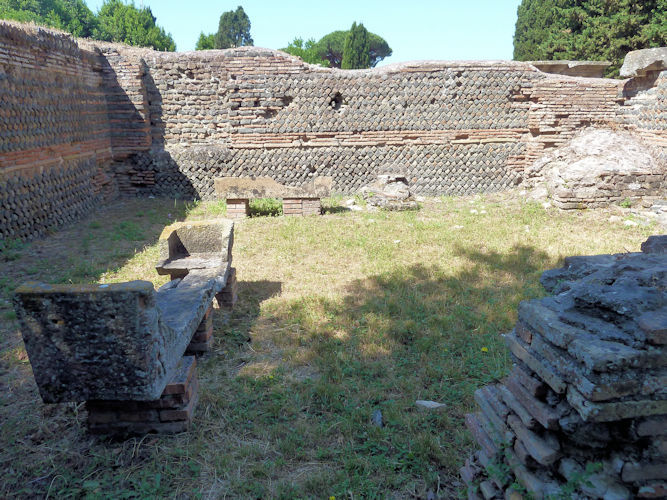

- The city experienced a long period of prosperity from the 1st to the 3rd century AD. Through
immigration and the import of slaves the population rose to fifty thousand.
- La ville a connu une longue période de prospérité du 1er au 3e siècle de notre ère. Grâce à
l'immigration et à l'importation d'esclaves la population est passé à cinquante mille.
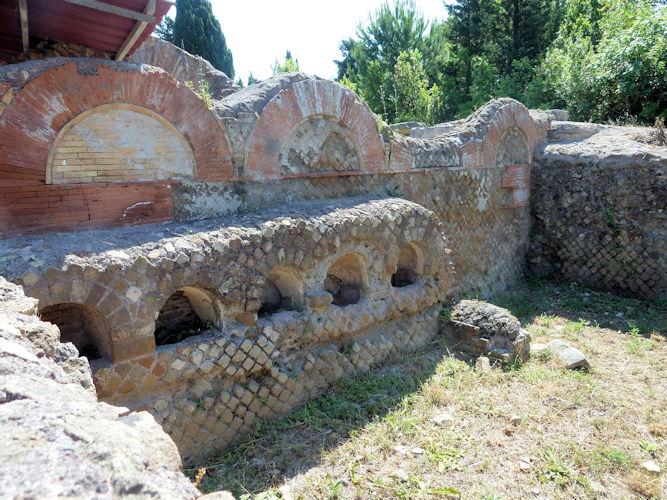

- Ostia Antica is noted for the excellent preservation of its ancient buildings, magnificent frescoes
and impressive mosaics
- Ostia Antica est reconnu pour l'excellente conservation de ses bâtiments anciens, ses magnifiques
fresques et ses mosaïques impressionnantes


- Via Delle Tombe in Ostia Antica where we find numerous urns
- Via Delle Tombe à Ostia Antica où nous trouvons de nombreuses urnes


- An inlaid wall near Via Delle Tombe in Ostia Antica
- Un mur incrusté près de la Via Delle Tombe à Ostia Antica


- The Terme di Nettuno (Neptune Baths) are very large, 67 x 67 meters, and consist of baths and a
large palaestra. They were completed in 139.
- Les Terme di Nettuno (Thermes de Neptune) sont de très grandes, 67 x 67 mètres, et se composent
de bains et d'une grande palestre. Ils ont été achevés en 139.
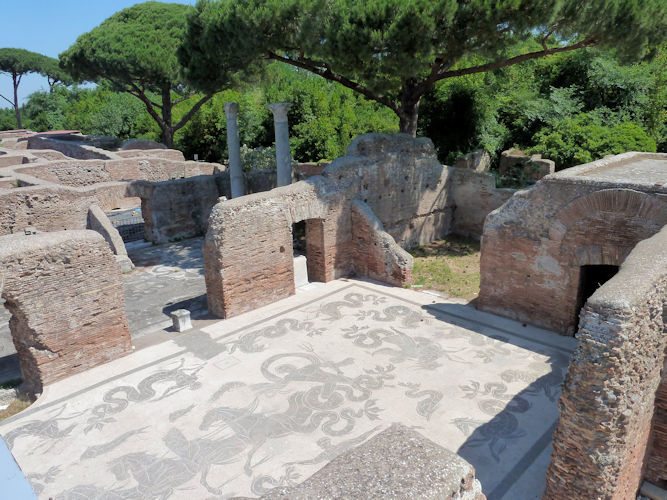

- The Neptune Baths are famous because of its black and white mosaics. This one shows Neptune on
his chariot pulled by sea horses, surrounded by Tritons, Nereids and dolphins.
- Les Thermes de Neptune sont célèbres en raison de ses mosaïques noires et blanches. Celle-ci montre
Neptune sur son quadrige tiré par des chevaux marins, entouré de tritons, de Néréides et de dauphins.
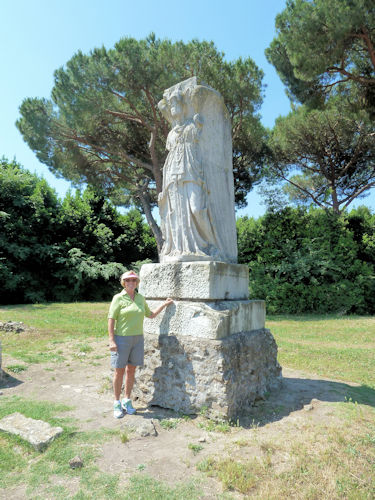

- The statue of Winged Victory representing Minerva
on Piazzale della Vittoria
- La statue de Victoire ailée représentant Minerve sur
la Piazzale della Vittoria
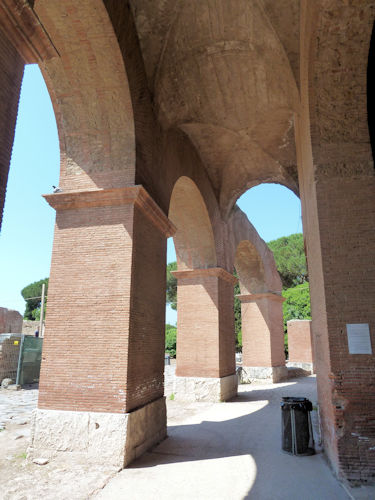

- The exterior arches of the Ostia Antica theatre.
There were also arches on the second and third levels.
- Les arcades extérieures du théâtre d'Ostie. Il y avait
aussi des arcades sur les deuxième et troisième niveaux.
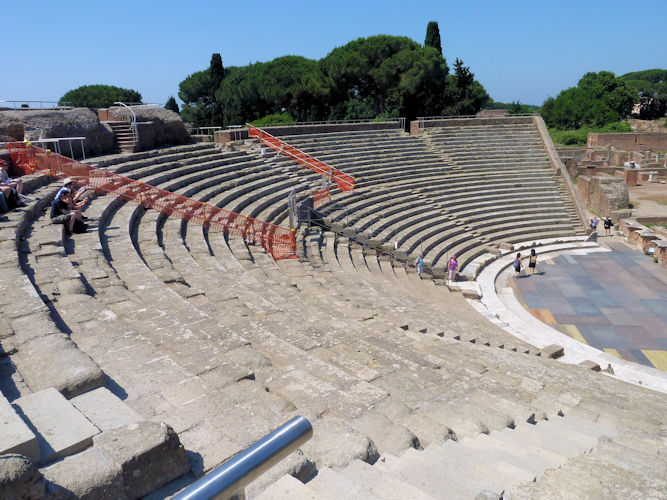

- The theatre was built at the end of the first century BC by Agrippa, the right-hand man of
Augustus. It could hold 3000 spectators.
- Le théâtre a été construit à la fin du premier siècle av. J.-C. par Agrippa, le bras droit d'Auguste.
Il pouvait contenir 3000 spectateurs.
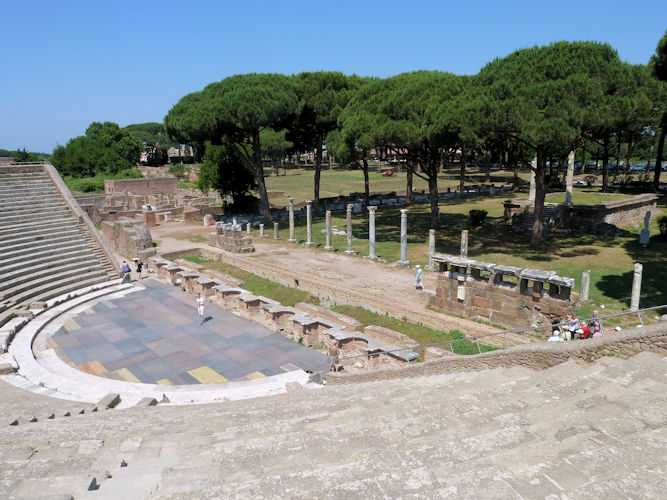

- The theatre was enlarged in the late second century AD. In that period it could hold 4,000
people. The actual building was restored extensively.
- Le théâtre a été agrandi à la fin du deuxième siècle de notre ère. En cette période, il pouvait
contenir 4,000 personnes. Le bâtiment actuel a été extensivement restauré.


- Theatrical masks, part of the architectural decoration of the theatre
- Masques de théâtre, une partie de la décoration architecturale du théâtre
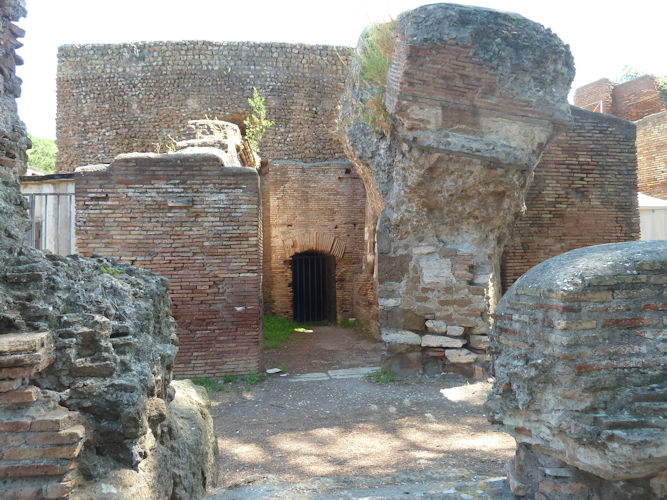

- Ruins near the theater in Ostia Antica
- Des ruines près du théâtre à Ostia Antica